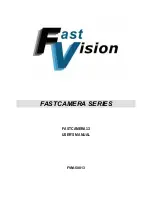
10 EN
• OLYMPUS accepts no liability for any loss of data
associated with this device.
• Be careful with the strap when you carry the
camera. It could easily catch on stray objects and
cause serious damage.
• Before transporting the camera, remove a tripod
and all other non-OLYMPUS accessories.
• Insert the battery carefully as described in the
operating instructions.
• Before loading, always inspect the battery carefully
for leaks, discoloration, warping, or any other
abnormality.
• Always unload the battery from the camera before
storing the camera for a long period.
• When storing the battery for a long period, select a
cool location for storage.
• Power consumption by the camera varies
depending on which functions are used.
Using the wireless LAN/Bluetooth
®
functions
• Turn off the camera in hospitals and other
locations where medical equipment is present.
The radio waves from the camera may adversely
affect medical equipment, causing a malfunction
that results in an accident. Be sure to disable
wireless LAN/
Bluetooth
®
functions in the vicinity of
medical equipment.
• Turn off the camera when onboard aircraft.
Using wireless devices onboard may hinder safe
operation of the aircraft. Be sure to disable wireless
LAN/
Bluetooth
®
functions onboard aircraft.
• Do not use this product where it may interfere
with nearby radar systems.
FCC Notice
This equipment has been tested and found to comply
with the limits for a Class B digital device, pursuant to
part 15 of the FCC Rules. These limits are designed
to provide reasonable protection against harmful
interference in a residential installation. This equipment
generates, uses and can radiate radio frequency energy
and, if not installed and used in accordance with the
instructions, may cause harmful interference to radio
communications. However, there is no guarantee that
interference will not occur in a particular installation.
If this equipment does cause harmful interference to
radio or television reception, which can be determined
by turning the equipment off and on, the user is
encouraged to try to correct the interference by one or
more of the following measures:
• Reorient or relocate the receiving antenna.
• Increase the separation between the equipment
and receiver.
• Connect the equipment into an outlet on a
circuit different from that to which the receiver is
connected.
• Consult the dealer or an experienced radio/TV
technician for help.
• Only the OLYMPUS-supplied USB cable should
be used to connect the camera to USB enabled
personal computers.
FCC/I
6('
Caution
Changes or modi
¿
cations not expressly approved by
the party responsible for compliance could void the
user’s authority to operate the equipment.
This equipment must not be co-located or operated in
conjunction with any other antenna or equipment except
Olympus wireless equipment whose RF exposure was
evaluated for this equipment.
For the latest information, please visit the Olympus
website.
Website: https://cs.olympus-imaging.jp/en/support/imsg/
digicamera/download/notice/rfsimullist.cfm
The available scienti
¿
c evidence does not show that
any health problems are associated with using low
power wireless devices. There is no proof, however,
that these low power wireless devices are absolutely
safe. Low power Wireless devices emit low levels of
radio frequency energy (RF) in the microwave range
while being used. Whereas high levels of RF can
produce health effects (by heating tissue), exposure
of low-level RF that does not produce heating effects
causes no known adverse health effects. Many studies
of low-level RF exposures have not found any biological
effects. Some studies have suggested that some
biological effects might occur, but such
¿
ndings have
not been con
¿
rmed by additional research. IM010 has
been tested and found to comply with FCC/I
6('
radiation exposure limits set forth for an uncontrolled
environment and meets the FCC radio frequency (RF)
Exposure Guidelines and RSS-102 of the I
6('
radio
frequency (RF) Exposure rules.
Содержание E-M1X
Страница 13: ......































